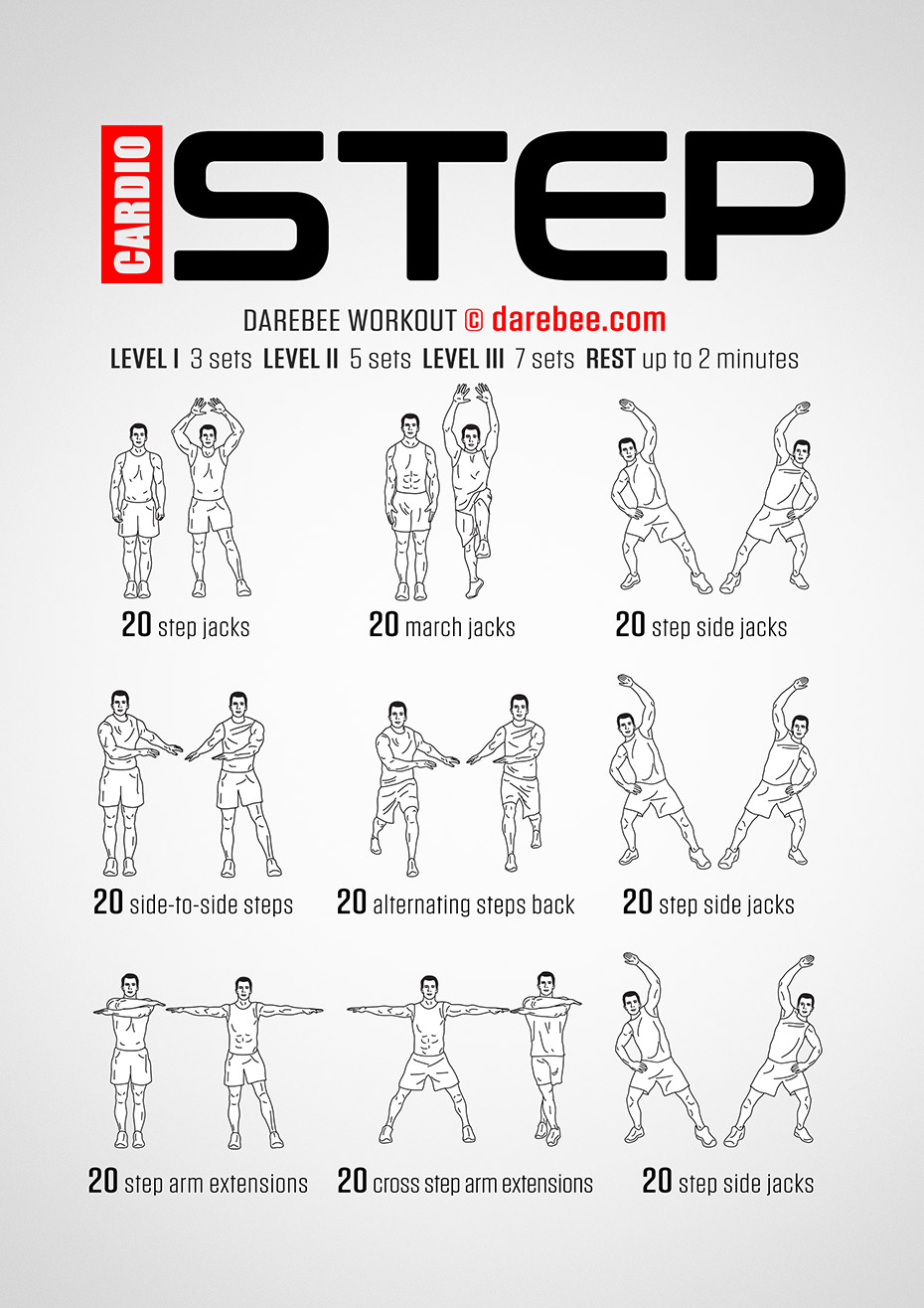Are you ready to make exercise a simple, enjoyable part of your daily routine? You might feel overwhelmed by all the workout advice out there, but it doesn’t have to be complicated.
This step-by-step guide breaks down exercise into easy, clear actions you can follow right now. By the end, you’ll feel confident and motivated to move your body the right way—no confusion, no guesswork. Keep reading, and discover how small changes can lead to big results for your health and energy.
Benefits Of Regular Exercise
Regular exercise changes your life in many good ways. It helps your body work better and your mind feel stronger. Small daily moves add up to big health wins. Regular exercise also keeps you well for years.
Start with small steps. Keep moving to enjoy lasting benefits. Here are key reasons to make exercise part of your routine.
Physical Health Improvements
Exercise makes your heart strong. It lowers blood pressure and improves blood flow. Your muscles get stronger and your bones grow denser. Regular activity helps control weight and reduces fat. It also boosts energy and improves sleep quality. Your body fights sickness better with exercise.
Mental Health Boosts
Exercise lifts your mood and reduces stress. It lowers feelings of anxiety and depression. Moving your body releases happy chemicals in your brain. It improves focus and helps you think clearly. Exercise also boosts your self-confidence and motivation. A healthy mind feels calm and alert.
Long-term Wellness
Exercise helps you live longer and healthier. It lowers risk of many diseases like diabetes and heart problems. Staying active protects your brain from memory loss. It keeps joints flexible and reduces pain. Regular movement supports good habits and a balanced life. Your future self will thank you.
Types Of Workouts
Exercise includes many types of workouts. Each type helps your body in different ways. Choosing the right workout can improve health and fitness. Understanding these types makes exercise easier and more fun.
Cardio Exercises
Cardio exercises raise your heart rate. They help your lungs and heart work better. Examples include walking, running, cycling, and swimming. Cardio burns calories and boosts energy. It also helps reduce stress and improve mood.
Strength Training
Strength training builds muscle and bones. It uses weights, resistance bands, or body weight. Common exercises are push-ups, squats, and lifting weights. This type of workout helps with daily tasks. It also improves posture and balance.
Flexibility And Mobility
Flexibility exercises stretch muscles and joints. They increase movement range and reduce injury risk. Yoga and stretching routines fit here. These workouts help muscles relax and recover. They make movements smooth and easy.
Balance And Stability
Balance exercises improve body control and coordination. They help prevent falls and injuries. Examples are standing on one leg or using a balance board. These workouts strengthen core muscles. They support better posture and movement.
Setting Workout Goals
Setting workout goals helps you stay focused and motivated. Clear goals guide your exercise efforts. They make progress easier to see and celebrate. Without goals, workouts can feel random or tiring.
Start by understanding your current fitness. Then, pick targets that fit your life. Keep track of your journey to stay on course.
Assessing Fitness Levels
Know your starting point before setting goals. Check your strength, endurance, and flexibility. Simple tests like timed walks or push-ups work well. Record your results for future comparison. This step helps avoid injury and sets a clear baseline.
Choosing Realistic Targets
Pick goals that match your fitness and time. Small, steady steps lead to big changes. Avoid aiming too high too fast. Goals like walking 30 minutes daily or doing 10 push-ups help. Realistic goals keep motivation high and reduce frustration.
Tracking Progress
Write down your workouts and results each day. Use a journal, app, or calendar. Seeing progress boosts confidence and focus. Adjust goals if needed to stay challenged. Tracking also highlights patterns and areas to improve.
Preparing For Exercise
Preparing for exercise sets the stage for a safe and effective workout. It helps reduce injuries and improves performance. Taking time to prepare ensures your body is ready to move and work hard.
Proper Warm-up Routines
Start with light activities like walking or jogging. This raises your heart rate slowly. Follow with dynamic stretches to loosen muscles. Arm circles, leg swings, and torso twists work well. Warm-ups increase blood flow and reduce stiffness. They prepare your muscles for more intense exercise.
Essential Gear And Equipment
Wear comfortable clothes that fit well. Choose shoes that support your feet and suit your activity. Use gear like gloves or knee pads if needed. Check equipment like bikes or weights before use. Proper gear protects your body and improves exercise quality.
Nutrition And Hydration Tips
Eat a small meal or snack 1-2 hours before exercise. Choose foods with carbs and protein. Drink water before and during your workout. Staying hydrated helps keep energy and focus high. Avoid heavy or greasy foods that can cause discomfort.
Step-by-step Workout Plans
Step-by-step workout plans help you stay organized and focused. They guide you through exercises that match your fitness level. These plans build strength and improve endurance gradually. Following a clear routine reduces confusion and risk of injury. You gain confidence as you progress through each stage.
Below are workout routines for different levels. Each plan focuses on core exercises and balanced training. Start with what fits your current ability. Challenge yourself safely to see steady results.
Beginner Workout Routine
Start with simple exercises to build basic strength. Include bodyweight movements like squats, push-ups, and lunges. Perform 2 to 3 sets of 10 to 15 reps. Rest for 30 to 60 seconds between sets. Add light cardio such as walking or jogging for 10 minutes. Do this routine 3 times a week.
Intermediate Workout Routine
Introduce weights or resistance bands for more challenge. Combine strength exercises with cardio intervals. Try 3 to 4 sets of 12 reps per exercise. Include moves like dumbbell presses, rows, and planks. Add 15 to 20 minutes of moderate cardio. Perform this routine 4 times a week.
Advanced Workout Routine
Focus on higher intensity and complex movements. Use heavier weights with 4 to 5 sets of 8 to 10 reps. Include exercises like deadlifts, pull-ups, and kettlebell swings. Add high-intensity interval training for 20 to 30 minutes. Train 5 to 6 times weekly, allowing rest days. This plan maximizes strength and endurance.

Credit: darebee.com
Exercise Techniques And Form
Exercise techniques and form play a key role in your workout success. Proper form helps prevent injuries and boosts results. Using correct techniques makes each movement effective and safe. Focus on your body’s position and motion during exercises. Small changes improve performance and reduce strain.
Common Mistakes To Avoid
Many people make errors that reduce workout benefits. Avoid rounding your back during lifts. Do not lock your joints fully; keep them slightly bent. Avoid fast, jerky movements that stress muscles. Skipping warm-ups or cool-downs increases injury risk. Poor form can cause pain and slow progress.
Correct Posture And Alignment
Good posture means your body stays balanced and aligned. Keep your spine straight and shoulders relaxed. Engage your core muscles to support your back. Feet should be shoulder-width apart for stability. Check your body in a mirror or record yourself. Proper alignment helps muscles work efficiently and safely.
Breathing Techniques
Breathing affects exercise performance and endurance. Inhale deeply before starting a movement. Exhale slowly while exerting effort. Avoid holding your breath during exercises. Controlled breathing supplies muscles with oxygen. It also helps maintain focus and rhythm.
Recovery And Rest
Recovery and rest are key parts of any exercise plan. They help your body heal and get stronger. Without proper rest, your muscles can get tired and hurt. Taking time to recover lets you train better in the next session.
Importance Of Rest Days
Rest days give your muscles time to repair. They prevent overuse injuries and reduce fatigue. Skipping rest can lead to burnout and poor performance. Your body grows stronger during rest, not just exercise. Plan at least one or two rest days each week.
Stretching And Cool-down
Stretching after exercise helps your muscles relax. It lowers the chance of stiffness and soreness. A cool-down slows your heart rate safely. Simple stretches keep your body flexible. Spend five to ten minutes stretching at the end of each workout.
Managing Soreness And Injuries
Mild soreness is normal after exercise. Rest and light movement ease soreness faster. Use ice or heat to reduce pain. Stop exercise if pain is sharp or lasts long. Seek help for injuries to avoid worsening them. Listen to your body to stay safe.

Credit: www.marcypro.com
Staying Motivated
Staying motivated is the key to keep exercising regularly. Many start strong but lose interest fast. Small changes help maintain focus and energy. Motivation grows when you plan well and feel supported. Celebrating progress makes the journey fun and rewarding.
Creating A Workout Schedule
Set specific days and times for exercise. Treat these times like important appointments. A clear plan stops you from skipping workouts. Start with short sessions, then increase time slowly. Consistency builds habits and keeps motivation high.
Finding Support And Accountability
Share your goals with friends or family. Join a workout group or class for company. Having someone check on your progress helps. Support makes exercise feel less like a chore. Accountability pushes you to keep going on tough days.
Celebrating Milestones
Notice small wins like extra reps or longer walks. Reward yourself with something simple and healthy. Tracking progress shows how far you have come. Celebrations boost confidence and encourage more effort. Each milestone is proof of your hard work.

Credit: www.ritfitsports.com
Frequently Asked Questions
What Are The Basic Steps To Start Exercising Effectively?
Start with a warm-up to prepare your muscles. Follow with moderate exercises targeting major muscle groups. Cool down and stretch to improve flexibility and prevent injury. Consistency and gradual progression are key to effective workouts.
How Often Should I Exercise For Optimal Health?
Aim for at least 150 minutes of moderate exercise weekly. Spread workouts over 3-5 days for best results. Include strength training twice a week to build muscle. Regular exercise improves heart health, mood, and energy levels.
What Is The Best Order To Do Exercises Step By Step?
Begin with a warm-up to increase heart rate. Next, perform strength or cardio exercises. Finish with a cool-down and stretching to relax muscles. This sequence boosts performance and reduces injury risk.
How Can Beginners Avoid Common Exercise Mistakes?
Start slow and focus on form, not speed. Avoid skipping warm-ups or cool-downs. Use appropriate weights and rest between sets. Listening to your body prevents overtraining and injuries.
Conclusion
Exercise step by step helps build strong habits. Small actions lead to big changes. Stay patient and keep moving forward. Your body will thank you later. Consistency beats speed every time. Enjoy the process, not just results. Each day is a new chance to improve.
Keep it simple and stay active. You have the power to feel healthier. Start today, and see the difference soon.
